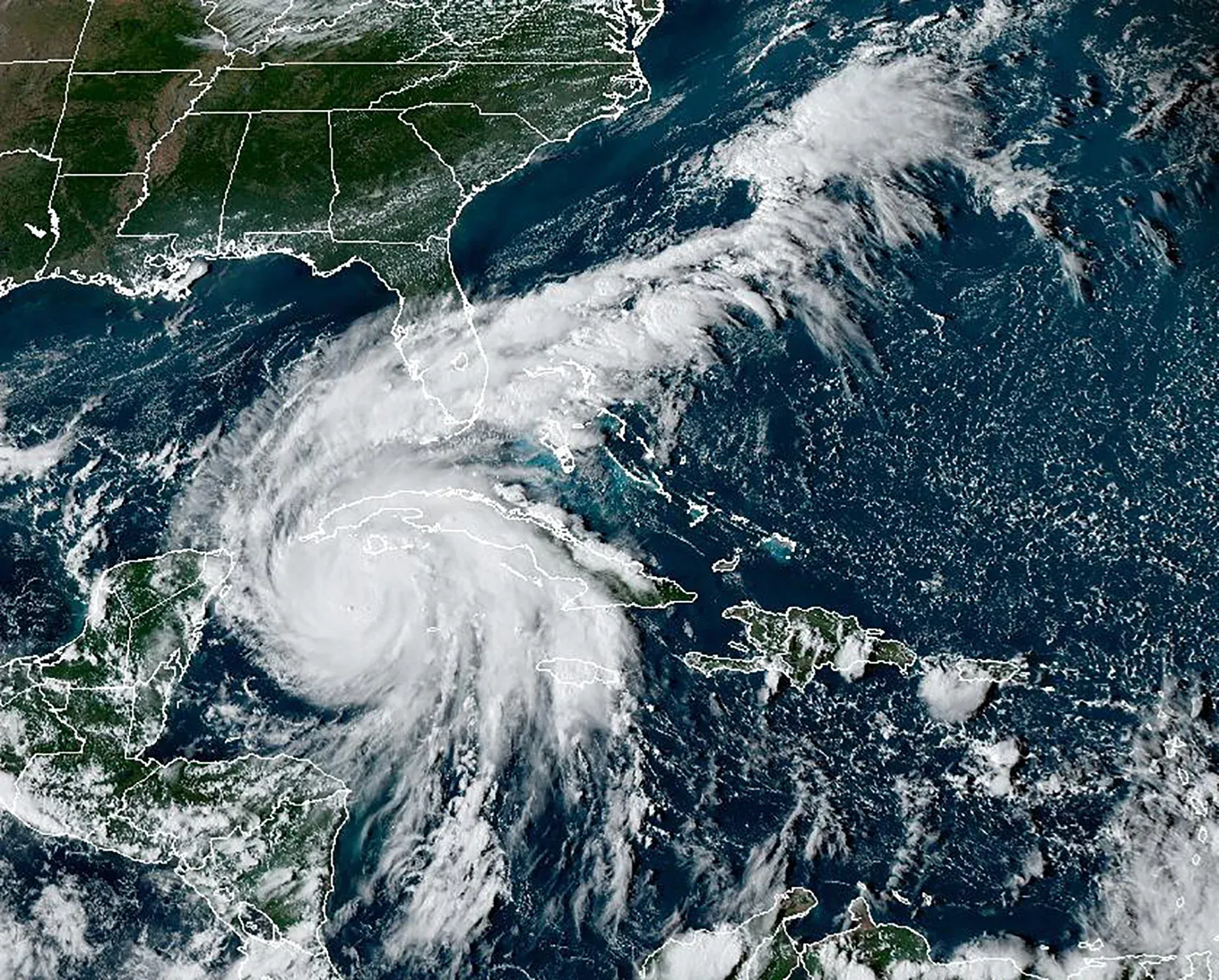Hurricane Ian Makes Landfall in Florida
On Wednesday, Florida Gov. Ron DeSantis stated that "it's no longer possible to safely evacuate" from Collier County and Sarasota as Hurricane Ian, which intensified into a high-end Category 4 storm, moved into Florida's west coast with destructive winds and rains [...]

Facts
- On Wednesday, Florida Gov. Ron DeSantis stated that "it's no longer possible to safely evacuate" from Collier County and Sarasota as Hurricane Ian, which intensified into a high-end Category 4 storm, moved into Florida's west coast with destructive winds and rains, eventually making landfall at 15:10 local time near Fort Myers.
- The National Hurricane Center warned that conditions were "rapidly deteriorating," with Ian's maximum sustained winds of 155 mph approaching the 157 mph speed of a Category 5 storm.
- The large-sprawling hurricane made slight alterations in its track before advancing into the Tampa Bay area, with impacts including wind damage and flooding far from the storm center.
- Tampa Bay has been consistently considered among the cities most vulnerable to major hurricanes but has been spared any direct strikes, with the last landfall dating back to 1921.
- More than 2.5M Floridians were urged to evacuate as Ian neared the Gulf Coast, threatening to wreak havoc with a potential storm surge of up to 12 ft and 2 ft of rain. Over 100 evacuation shelters have opened statewide.
- Ian has already caused Cuba's power grid to collapse and destroyed the island's tobacco farms after hitting the country on Tuesday. It made landfall as a Category 3 storm.
Sources: Politico, CNN, Tampa Bay, Snopes, Reuters, and NPR Online News.
Narratives
- Narrative A, as provided by CBS. Hurricane Ian is another example of a devastating cyclone turbocharged by human-induced climate change. Warming ocean water and atmospheric changes have fueled powerful storms; just this week alone, speculation on this phenomenon has included Hurricane Ian, Hurricane Fiona in Canada, and Typhoon Noru in the Philippines.
- Narrative B, as provided by The Heritage Foundation. While the media and climate activists choose specific events to claim that hurricanes have become more intense and more frequent due to climate change, long-term trends prove quite the contrary. Hurricane Ian is a natural disaster – and its consequences may be catastrophic – but instead of blaming climate change, we should enhance our disaster readiness to protect communities from an array of threats.






